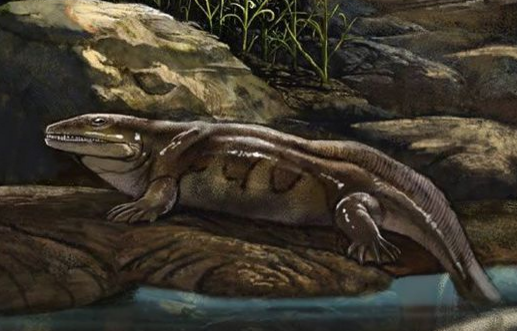To prove it they thought they needed just two fossils.
他們認為證明這一觀點只需要兩塊化石
They needed the first tetrapod, the very first land walking creature with four legs with five toes
他們需要找到第一只四足動物,第一只具備四肢和五趾的陸行動物
and they needed the fish from which it came, a fish that could grow legs.
他們還需要找到它起源的那條魚,一條能長出腿的魚
Find these two fossils, compare them and in the differences between them
找到這兩塊化石,對它們進行比較,根據(jù)它們之間的區(qū)別
we would learn the reason why a fish had developed legs.
我們就能了解魚進化出腿的原因
They had one huge clue to set them off:
有一條重要線索引導科學家進行探尋
they knew this evolution must have happened 400 million years ago, in the Devonian era.
他們知道這一進化過程肯定發(fā)生在4億年前的泥盆紀

The Devonian is so long ago that barely any rock can now be found from it, let alone fossils,
泥盆紀距今甚為久遠,如今那個時代的巖層已難覓蹤跡,更不用說化石了
but academics knew that before it nothing walked and after it everything did,
不過學者們知道,在此之前沒有能行走的動物,而這之后卻是誰都能行走
so the evolution of legs must have happened then and they thought they knew something else.
所以腿的進化必然發(fā)生在那個年代,而且他們還了解別的情況
Textbooks said it was a time of blistering heat when almost nothing could live on the land, not even plants.
教科書中記載當時的氣候酷熱難耐,任何生物都無法在陸地上生存,甚至連植物也不例外
It meant most life survived not on land but in the water.
也就是說大部分生物并非生活在陸地上,而是呆在水中
This was the age of fish and one of them, the one with the beginning of legs, was the first fossil they needed to find.
那是魚的時代,而其中一條魚擁有腿的雛形,那就是他們要找的化石。











